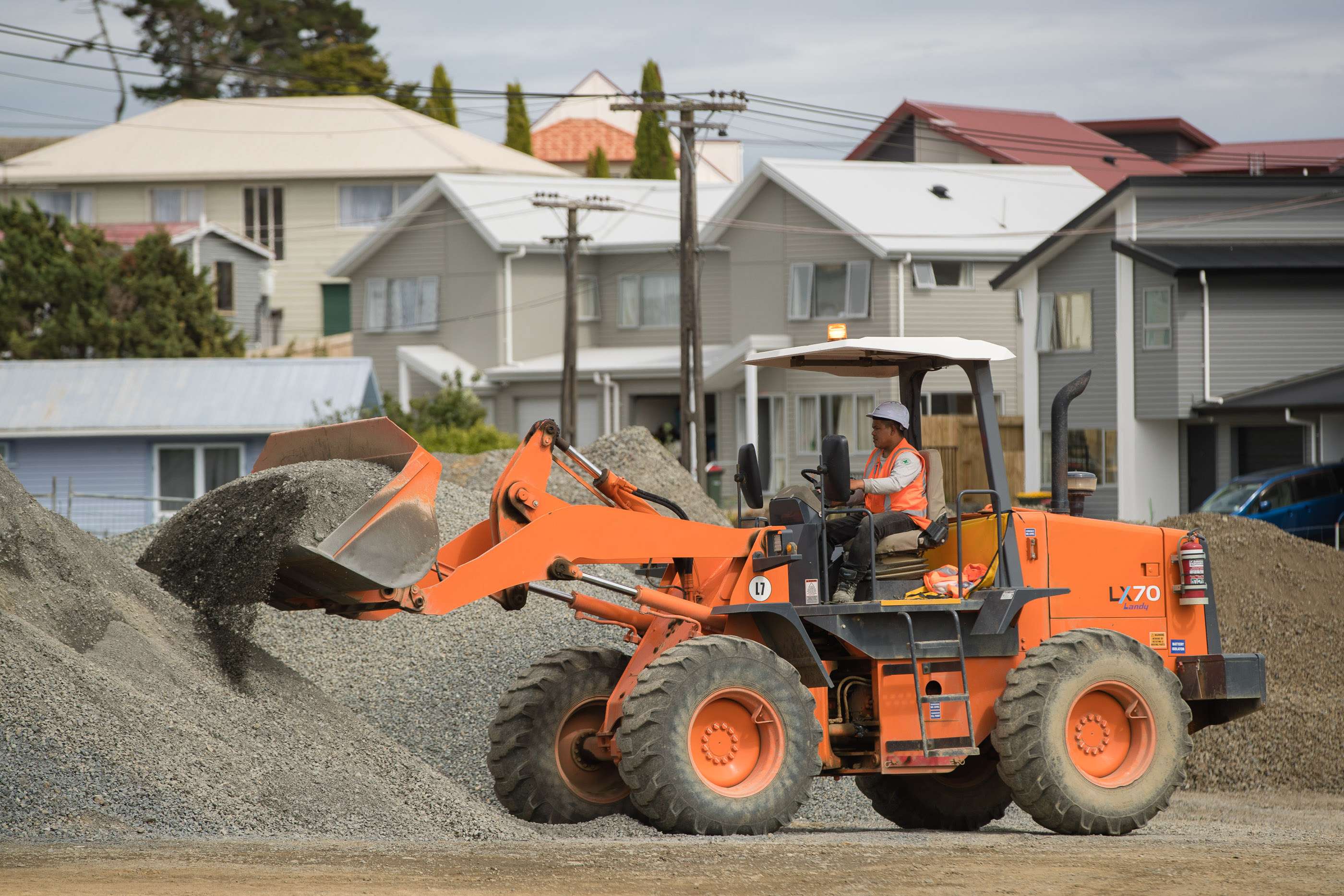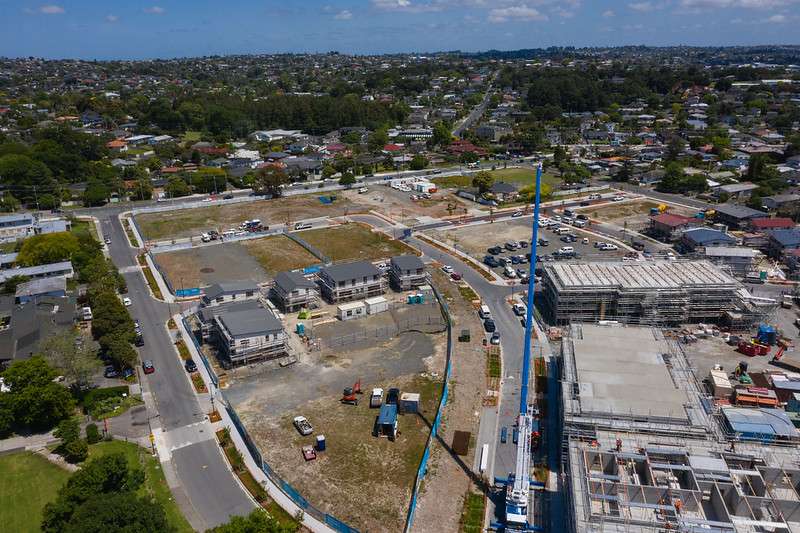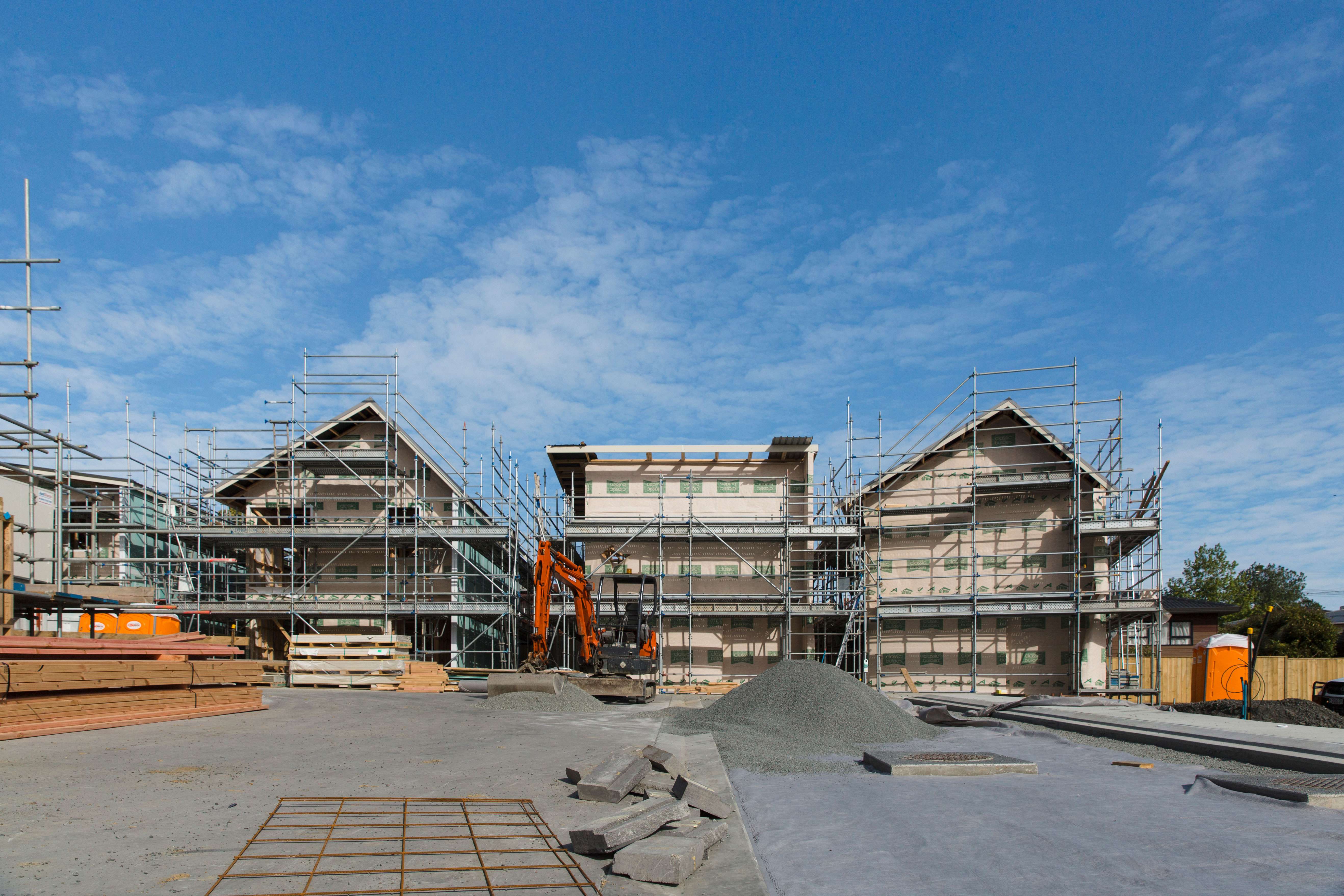Mat Tucker says he will never go back to the old way of working.
He’s talking about a way of doing business in large-scale, complex projects like the one Kāinga Ora – Homes and Communities is currently undertaking: preparing land, pipes, roads, reserves and other infrastructure for up to 25,000 new homes in large urban redevelopment across Auckland, including Hobsonville, Northcote, Mt Roskill, Mangere, Oranga and Tamaki.
Tucker is the General Manager of Civil Construction for Kāinga Ora, the new government agency encompassing what was previously Housing NZ, its development arm HLC and the KiwiBuild unit.
The planning, complexity and size of these projects are impressive, the biggest housing change in Auckland since World War II and the huge state house building programmes of the 1960s, increasing our housing density in new ways.
Start your property search

Preparing land in Roskill South for the construction of new warm, dry homes. Photo / Supplied
Over the next 20 years, approximately 10,000 state houses will be replaced by around 45,000 homes. Of those, a third will be public housing and two-thirds will be sold to private buyers, through affordable ownership schemes like KiwiBuild and the open market.
But this enormous scale of work has also spawned a new way of doing business – a development alliance – and Tucker often invokes a name which will become more and more familiar across Auckland as the years go by: Piritahi, already an entity which has grown from about a dozen people 18 months ago to over 220 today.
Piritahi is an alliance form of contract comprising six organisations – one client, Kāinga Ora, and five alliance companies (design, engineering and construction firms Dempsey Wood, Hick Bros Group, Harrison Grierson, Woods and Tonkin + Taylor).
The word Piritahi means “coming together as one”, a virtual company composed of those six entities. It is, says Tucker (originally a Briton who worked in a similar alliance – the Stronger Christchurch Infrastructure Rebuild Team or SCIRT), a “revelation”.
Its aim is to streamline land development, laying the groundwork for neighbourhoods that are better to live in and homes that are more affordable. It also aims to reduce the delays, the errors and the recriminations that have so often plagued the New Zealand construction industry under the more traditional construction contracting process.

Land in Northcote has transformed quickly. With infrastructure upgrades progressing rapidly, new homes are now under construction. Photo / Supplied.
The old way was the client organisation, like Kāinga Ora, contracted designers, engineers and builders individually, appointed in isolation to perform a certain task.
But the construction industry has been regularly affected by cross-contract disputes, cost overruns (and responsibility for same) and sometimes poor outcomes.
“What you’d get would be the client letting contracts to consultants, designers and all sorts of contractors individually. When something then goes wrong, which affects several of the parties, it can be human nature for the parties to retreat into their silos and blame each other. Lots and lots of time, effort and money can be wasted here,” says Tucker.
An alliance model like Piritahi means the companies involved work on a “pain and gain share” basis – identifying and solving problems before they start, sharing the risk and rigorously controlling budgets. They approach complex tasks with a problem-solving, resolution perspective rather than a philosophy of self, retreating into the shelter of a contract when issues arise.
“All parties are contractually incentivised to work together to solve all problems and be innovative,” he says. “They all share in any commercial pain or gain together. There is no blame apportionment to any individual party – every problem is jointly owned.
“I love it – I would never go back to the old way of working now – all that waste of time arguing. It’s better for everybody.”
He says the concept started decades ago when British Petroleum (BP) became involved in the hugely complex task of building oil rigs, towing them out to the North Sea, anchoring them there and drilling. Alliancing was championed in New Zealand by Colin Crampton, then of Transit New Zealand and now the CEO of Wellington Water.

Piritahi’s alliance model means land development is streamlined and homes can be built faster and more affordably. Photo / Supplied.
It was adopted by Kāinga Ora after Neil Mayo, General Manager of Finance and Corporate Services in the old HLC (now Kāinga Ora) took up the idea – and Tucker says Piritahi is really advancing the alliance philosophy and is becoming well known in Auckland and New Zealand. Other examples like the second Manukau Harbour crossing and the Waterview tunnel were both alliance models but they were single-project entities. Tucker says Piritahi is a programme alliance, completing multiple projects – now planning for 700 projects across Auckland in the current Auckland Housing Programme.
“That’s a massive undertaking - 700 projects that need to be planned, designed, coordinated, consented and built, and there are other projects we could yet become involved in," he says.
“The beauty of the programme alliance is that, the number of projects around town means we learn lessons that can be applied to the next project. I really like that iterative learning and sharing of knowledge. We get better and better as we go and keep applying lessons learned.”
One such learning is the removal of old state houses to clear the land for redevelopment, about 7000 of them. Piritahi is removing a solid proportion of those houses instead of demolishing them – and some materials are also being sent to Tonga for redevelopment or upgrading of houses there.
Soil contamination from elements like lead or asbestos is another big problem – stripping off the affected soil from every site would cost a fortune. Piritahi is investigating and trialling alternative safe ways to do that, saving millions of dollars.
“It took considerable courage and foresight by our previous CEO Chris Aiken and our HLC Board to adopt this alliance model and to embrace it,” says Tucker, “but there is no doubt it is the best way.”
- This content was supplied by Kāinga Ora









